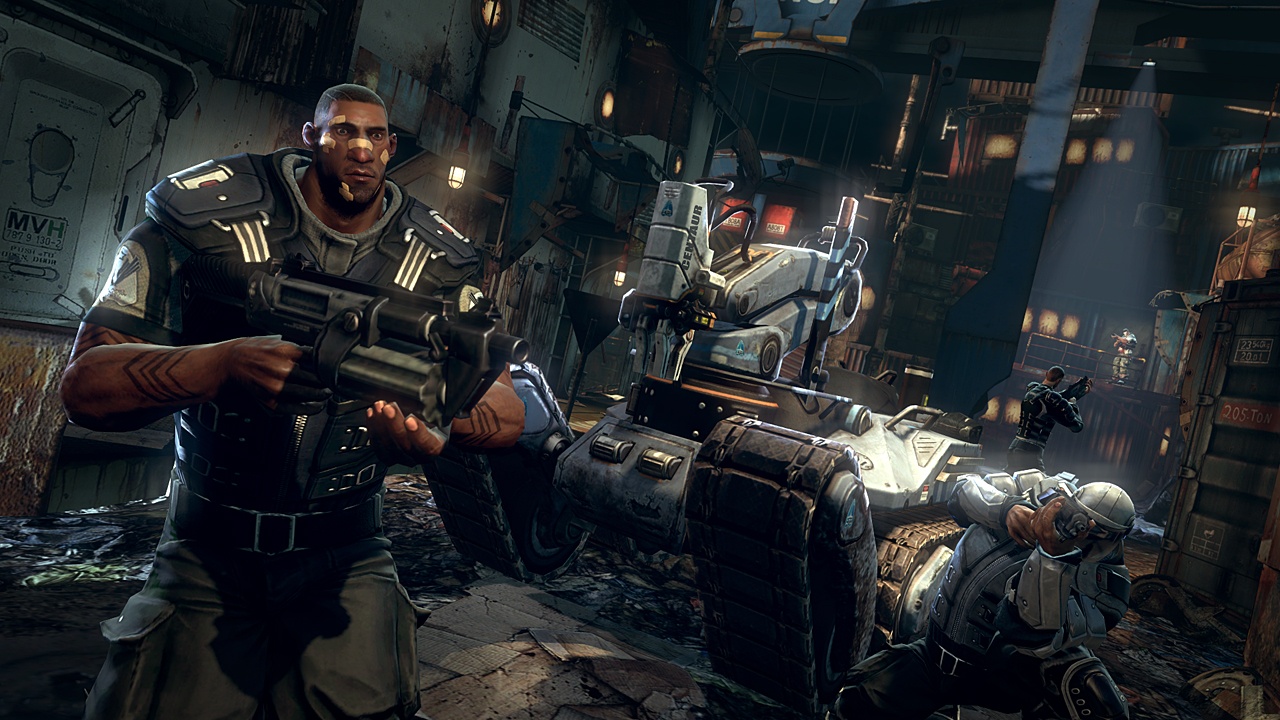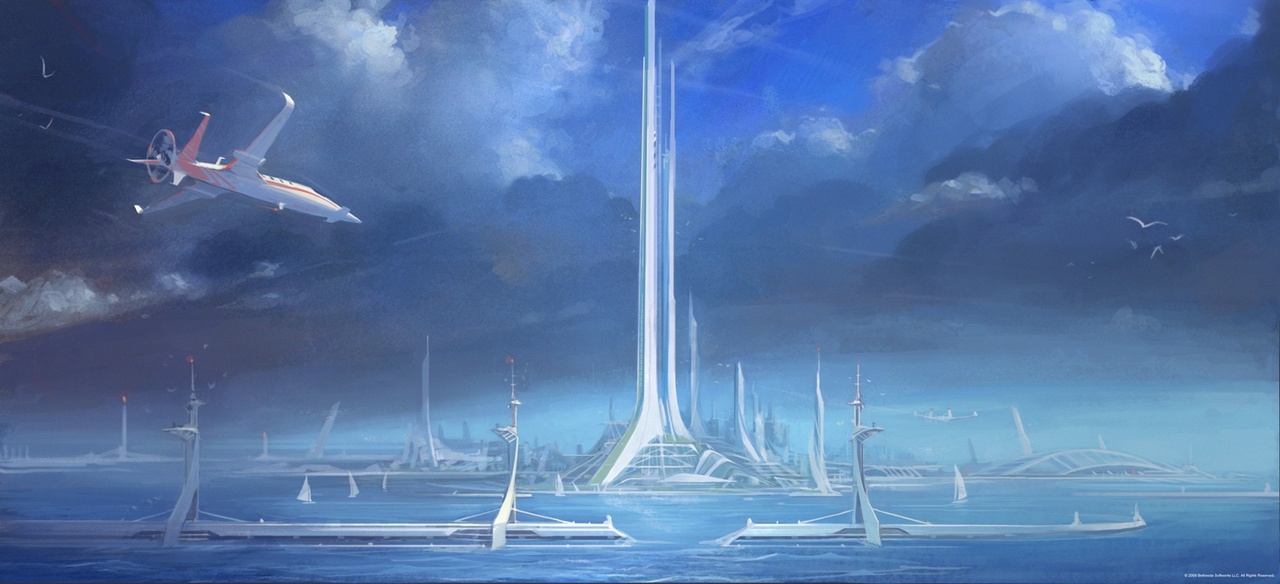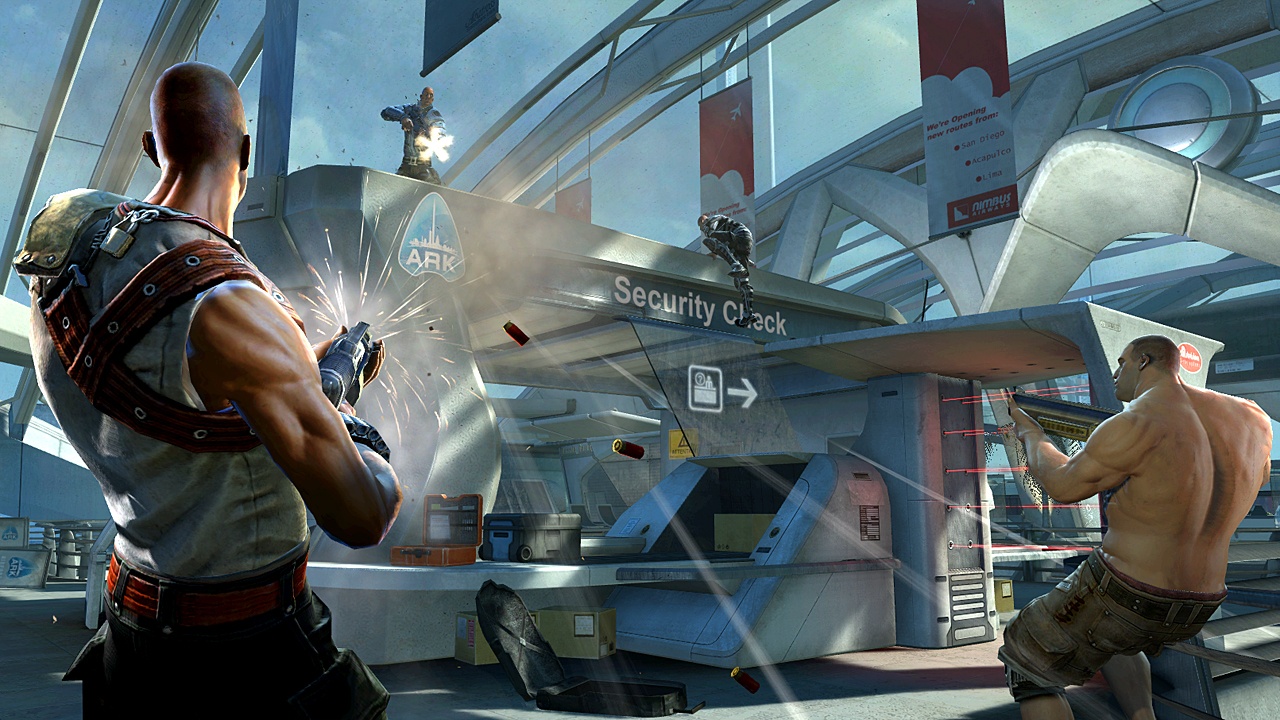Brink Q&A: Richard Ham
GameSpot switches places, improves SMARTs, and discusses seamless online play with Splash Damage's creative director.
Video games are all too easily categorized by players. Got a gun? It’s a shooter. Is there an option to spend skill points? Then it probably falls into the role-playing game family. Brink is hoping to mix things up by introducing breakaway class-specific goals, seamless single- and multiplayer characters, and context-sensitive environmental movement. We recently chatted with Brink’s creative director, Richard Ham, a man whose industry history spans work on such franchises as Fable 2, The Sims, and the Syphon Filter series.
GameSpot AU: Give us an overview of the story of the game. What is the Ark and what does it means to Brink?
Richard Ham: The Ark is a massive floating city that was built between 2005 and 2015 as a prototype for what man could achieve if he really wanted to live green. It’s designed to house around 5,000 people and be totally self-sustaining, with zero carbon emissions. And it works!
Unfortunately, not too long after the Ark was launched, the worst fears about climate change came to pass, and overnight, millions worldwide were displaced because of rising sea levels. Thousands of those refugees came to the Ark, and the Ark’s founders did what they could to help.
When the game starts, it’s about 30 years after the global flooding, and the Ark--which was designed to house 5,000 people--is now topped out at 50,000. They’ve lost all contact with the outside world, and they’re running out of resources. And the beautiful prototype city is starting to break down. With tensions rising, the whole place is on the verge of an all-out civil war.
Another Crab's Treasure Is A Soulslike 3D Platformer | GameSpot Review Stellar Blade Review Super Monkey Ball Banana Rumble - Official Multiplayer Features Trailer Nintendo 64 – April 2024 Game Updates – Nintendo Switch Online Gori: Cuddly Carnage | Meow Launch Date Announcement Trailer PUBG | Erangel Classic Returns Genshin Impact - "Arlecchino: Afterglow of Calamity" | Collected Miscellany Marvel Rivals - Official Loki Character Reveal Trailer | The King of Yggsgard Fortnite Festival - Official Billie Eilish Cinematic Season 3 Trailer Remnant 2 - The Forgotten Kingdom | DLC Launch Trailer Stellar Blade - Official "The Journey: Part 2" Behind The Scenes Trailer | PS5 Games Dead by Daylight | Tome 19: Splendor | Reveal Trailer
Please enter your date of birth to view this video
By clicking 'enter', you agree to GameSpot's
Terms of Use and Privacy Policy
GS AU: Character customization looks to be a huge part of Brink. How much will the body type of your character determine your physical abilities and maneuverability?
RH: The body type you choose for your character has a huge impact on how you play the game. The bigger you get, the stronger you are, which means you can carry and use the biggest, most powerful guns in the game and shrug off more gunfire. But you’re also a lot slower, so you’re always last to the party, and you can barely climb over a three-foot-tall barricade. So you give up a lot of maneuverability for all that firepower.
On the other hand, if you go for the light body type, you’re much faster, can climb up 15-foot-tall walls, do wall jumps, slide farther, and are harder to hit. But you are really physically weak, meaning you can only carry the lighter guns and can’t withstand much damage.
The medium guy, of course, is somewhere in the middle. Everyone starts the game with the medium body type, and as they level up, the option to upgrade to one of the other two becomes available, along with tons of other character abilities.
GS AU: There will be two campaigns in Brink. Will you get the chance to play as both factions during the course of the single-player campaign? Will there be a separate campaign for each side?
RH: At the beginning of the game, you decide which side you want to fight for in the Ark’s civil war. What’s interesting is that once you finish that campaign, the story will rewind, and you’ll get to play it from the other side. You’ll still use your same character (so you won’t lose all the progress you’ve made buying abilities and unlocking weapons), but you’ll be going through a completely different storyline and going on completely different missions.
While you’re going through either of these campaigns, you can jump around in the storyline at any time, however you want, and even jump campaigns if you prefer. Maybe you’re stuck on a tough mission and want to skip ahead; or maybe you saw a friend come online and you want to play with him, even though he’s on the other campaign. Or maybe you just finished a certain mission and you want to see what it was like from the other side, without having to wait until you eventually make it to the other storyline. The important thing is that we don’t tell you how to play the game; you make your own rules.

GS AU: Tell us about the command post system and what you hope it will do for player choice.
RH: A command post is kind of like a home base, where anyone on your team can swap out weapons, resupply themselves, or change class when the team needs someone to get an objective done. Each team starts the game with its own command post, so both teams have access to this base functionality.
There are additional command posts out on the battlefield, and when a team captures one of these, it gets all the normal perks mentioned above, but it also gets really nice teamwide bonuses that can turn the tide of battle.
So, let’s say your team is trying really hard to blow through a barricade to access a later part of the level, but the defenders are completely dominating the area and you can’t punch through. You might decide to step away from that frontline battle and sneak around behind enemy lines as an operative in disguise. When you do, you stumble across the enemy’s command post that is giving every single one of your enemies more powerful weapons. When no one’s looking, you capture that command post for your team, and now the tables have turned! Now your guys have the superior firepower, and the defenders have to retreat from that barricade they were defending.
And there’s even more to command posts. If your team has captured one, two of the classes (engineer and operative) have abilities (if they’ve leveled up and bought them) allowing them to modify it even further. An engineer can upgrade the command post so that it gives even stronger benefits to your whole team, and an operative can “firewall” it, so that it becomes much harder for enemies to steal it back.
So there’s a lot of high-level strategy involved with command posts on the battlefield, and smart teams will need to know when to try to control them and when to focus on other objectives.
GS AU: We’ve briefly seen the objective wheel in Brink. What kind of objectives can players expect? How will the system help you work as a squad?
RH: Basically, in a game with such fast-paced, in-your-face action as Brink, there’s a danger that players can’t quite cope with all the strategic depth that’s layered on top. So we introduced the objective wheel, which allows players to really keep a handle on the big picture and always make smart decisions about what they should do next in a battle.
So for example, in the previous answer, I told the story about how the attackers were having a hard time getting a barricade destroyed that was very heavily defended. If you had found yourself on that attacking team, instead of just continuing to bang your head against the wall of that unbeatable defense, you can quickly pull up the objective wheel to get an idea of what else you could be focusing on. You’ll see a list of recommendations for actions you can take, prioritized by how important they are to the bigger picture. You’ll also see how much XP you’ll earn for completing those objectives, so even if you don’t care about the big picture of your team winning, you can still make a choice that helps it so you can level up faster. In Brink, even selfish players end up helping the greater good!

GS AU: Does switching between classes level up each class independently or does all experience gained join a shared experience pool?
RH: It’s a shared XP pool. Because you can change your class at any time in a match, we wanted to give players the maximum flexibility to level up the way they want to. You might spend all your XP on becoming the best operative in the world, or you might spread it out amongst all the classes equally (soldier, medic, engineer, and operative). Or maybe you don’t get new class abilities at all and put all your XP into buying general abilities that help no matter what class you are. The choice is all up to you.
GS AU: Tell us how the SMART system works and how you hope it will affect the way players approach the environment.
RH: The SMART button is actually a very simple concept. You hold it down, and that means you’re signaling to the game that you don’t want to get stuck on anything. If something gets in your way, you will climb over it, slide under it, or smash through it (in the case of enemy players).
The thinking behind SMART is that we want you to master the intricacies of shooting, not the intricacies of platforming.
Now all that said, there are some players who still like to do all the heavy lifting themselves, and they don’t have to use the SMART button at all. They can use the sprint, crouch, and jump keys in combination to achieve everything the SMART button does. And if they do it well, they’ll find they get slight advantages in some circumstances--and in some circumstances, really big advantages when doing stuff like wall hopping.
GS AU: Is SMART limited to going up and over or sliding under obstacles?
RH: This depends on what body type you are. If you’re a big strong guy, you can use SMART to climb over things that basically come to waist height. If you’re a medium, you can get over stuff easily that comes to eyeball height. And if you’re a little guy, you can climb up stuff way above eyeball height. Remember, we’re a first-person shooter, so I tend to think in terms of what you can see onscreen. So the type of character you are really effects what the SMART button allows.
GS AU: You’re offering cooperative play for up to seven friends online. Can your squad be made up of multiples of the same class? And, will the command post system be available in multiplayer?
RH: Well, first, there’s absolutely no difference between single-player and multiplayer in Brink--they’re the same thing. The missions all have the same objectives and tools to complete those objectives. You can seamlessly switch from a solo experience to a co-op experience to a competitive experience--all in the same mission. You can go through the entire storyline of both campaigns offline or online and get the same experience either way.
Command posts are always available, which means switching classes is always available too. And yes, it’s a perfectly valid tactic to have multiples of the same class on a team; in fact, it’s usually essential. But teams have to be careful and try to maintain a good balance of all four classes. If they get too top heavy, they become weak against certain enemy tactics. Let’s say most everyone on the team turns into a medic. That’d be great, right? They can all work together to keep everyone else alive and win in any situation. Except for the fact that they’ll all run out of ammo without a few soldiers around to keep everyone stocked up, and they’ll be really susceptible to enemy land mines since they have no operatives to spot them.
So a proper team complement is important, and it’s one of those things the objective wheel can help with since the wheel will suggest when a certain class is really necessary and when the team doesn’t have enough of it.

GS AU: Splash Damage has a strong history with PC multiplayer games. What kind of competitive and social multiplayer will we see in Brink?
RH: Well, we’re still pre-alpha at the moment, so at this point, all I can say is we would like Brink to live up to our legacy of great multiplayer gaming.
GS AU: We saw Mirror’s Edge bump the field of view up to suit the gameplay. Are you doing something similar in Brink?
RH: Actually, no. We’re all about the shooting--not all about the climbing--but we want to ensure that there’s nothing in-game that stops you from getting where you want to go. So in Brink, when you scale a wall, you can still shoot your gun!
GS AU: What lessons did you learn developing Enemy Territory: Quake Wars?
RH: I think there were a couple of big ones. One was all about accessibility. When you’re making a really fast-paced, yet really deep game like what we make, it can be daunting for new players to come in and make sense of it. That’s a problem when they’re competing against hardened veterans who know their way around every system. So we’ve worked really hard in Brink to ensure that everyone has a fighting chance from day one because we believe that everyone has a better time--newbie and veteran alike--when everyone on the team is contributing 100 percent.
GS AU: Richard Ham, thanks for your time.
Got a news tip or want to contact us directly? Email news@gamespot.com
Join the conversation